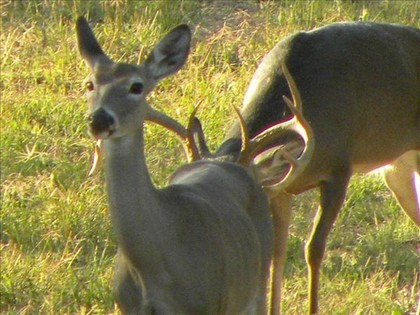The whitetail deer mating (breeding season) takes place each fall. The specific time varies from location to location, even between areas that are only 100 miles from one another. The peak of the mating season is called the rut. Hunting the rut is considered the ideal time for hunters to take to the woods, capitalizing on the fact that bucks and does will be on the move. Older, mature does will come into estrus first, signaling the start of the whitetail breeding season.
Whitetail are important animals because they influence the plant communities in which they live. Too many deer can cause problems for their habitat, actually eliminating some forbs and browse that they eat. As such, regulated deer hunting is an important tool for managing deer populations. Although wildlife populations tend to cycle with environmental conditions, a deer population can exceed the carry capacity of the area in which it is found. The result is typically decreased reproduction, lower fawn survival and death, of both young and old.

Source: “One of the most interesting times to observe ‘whitetails’ is during the mating or rutting season. Mating occurs in the fall when males will fight by butting and clashing antlers to win access to a doe. Antler size is part of what determines social status in the herd and a larger rack can increase mating chances. Males will also use their antlers to strip the bark off of saplings or low hanging branches and paw at the ground to create a ‘scrape’ an area of exposed earth which they mark with scent. Numerous scent glands cover the legs of the deer and secretions mark their territory during the rutting season.
One to three fawns are born six months after mating and are reddish-brown with white spots. Fawns can walk at birth and can even forage for food a few days later. While the doe looks for food, she hides the fawns under heavy cover where they lie well-camouflaged against the ground. Fawns may lie quietly for up to four hours until the mother returns.
Fawns stay with the mother for the first year after which they male yearlings venture out on their own. Female offspring leave after two years. Deer live in family groups of a doe and her fawns. Bucks live either or alone or in small groups of three to four.”